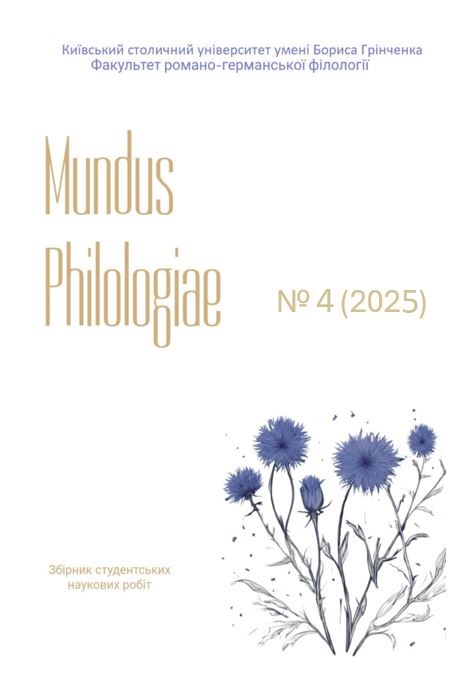ENGLISH ADVERTISING SLOGAN: A SEMIOTIC UNIVERSALIA-ORIENTED ANALYSIS
Keywords:
рекламні слогани, семіотичний підхід, універсологічний підхід, структуралізм, постструктуралізм, культурні маркери, advertising slogans, semiotic approach, universological approach, structuralism, post-structuralism, cultural markersAbstract
The article carries out a semiotic and universological analysis of advertising slogans, which allows us to identify key aspects of their functioning in global communication. Advertising slogans, due to their brevity, cultural significance and role in the advertising environment, are important units for semiotic research. The issue is the need to study slogans taking into account both structuralist and post-structuralist approaches, since the meaning of slogans is not fixed, but is formed as a result of the interaction of linguistic, cultural and social contexts. The aim of the article is to analyze semiotic elements and cultural markers that determine the effectiveness of slogans in the global environment. A literature review shows that slogans combine local and global elements, condensing cultural representations, while speculating on universal human values. As a result of the research, a sample of slogans of leading brands was analyzed, in particular from the period 2020 – 2023, reflecting global trends of the post-pandemic stage and social transformations. Quantitative and qualitative analysis was carried out to identify linguistic constructs and semiotic strategies that contribute to globalization and the adaptation of brands to cultural contexts. The article also highlights methods for adapting slogans to different cultural environments, which contributes to their effectiveness at the international level. The results of the research confirm that slogans are not only linguistic units, but also powerful tools for forming cultural narratives that combine elements of local specificity and universal symbols. Thus, slogans act as a medium between different cultures, contributing to effective communication at the international level. This article discloses the importance of combining structuralist and post-structuralist methods for a deeper understanding of the dynamics of advertising communication at the global level.




